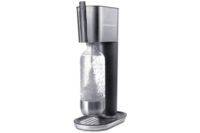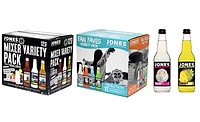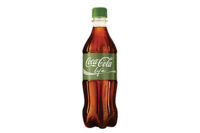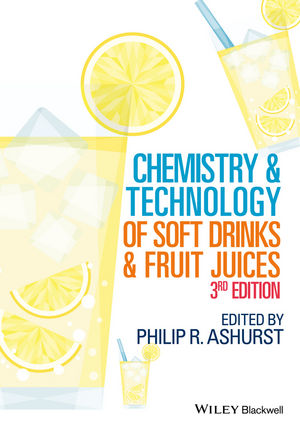New Flavors Create Soft Drink Bubbles in a Flat Year
The carbonated beverage segment faced one of the most challenging years in 2004 than any other time in the past decade. Negative press linked soft drink consumption to obesity and carb-conscious dieters shunned the category in favor of sugar-free alternatives. As a result, all retail channels (with the exception of convenience stores) watched soda sales decline. In an attempt to revive the slumping segment, soft drink beverage manufacturers revitalized their lines with new flavor additions and additional diet products.
One of the biggest trends in 2004 was the effort to
deal with carb-counting dieters. In March, Pepsi announced the debut of
Pepsi Edge, the first full-flavored cola with 50 percent less sugar,
carbohydrates and calories than regular colas. According to the company,
Pepsi Edge’s full-flavored cola taste was maintained through the use
of a blend of nutritive and non-nutritive sweeteners.
Less than a month later, Coke announced the launch of
its own carb-conscious soda, Coca-Cola C2. A mid-ranged carbohydrate
beverage that was more than a year in the making, C2 boasted half the
sugar, carbohydrates and calories of regular colas.
But mid-calorie products did not prove successful with
consumers, and Pepsi announced this May that it will discontinue Pepsi Edge
by the end of the year. Pepsi Edge sold 8.6 million cases during the six
months it was on the market in 2004. For its part, Coca-Cola is holding
onto C2 even though it hasn’t had a strong start. U.S. sales totaled
25 million cases during its six months on the market in 2004, which is far
lower than the comparable introduction of Vanilla Coke, which sold 90
million cases during its first partial year on the market in 2002.
More recently, Pepsi reformulated its one-calorie
Pepsi One with Splenda, and Coca-Cola introduced Coca-Cola Zero, a new
zero-calorie cola. Coca-Cola Zero is sweetened with a blend of aspartame
and acesulfame potassium (ace-k).
Cadbury Schweppes Americas Beverages also launched new
offerings to broaden the choice for dieters wary of sugar. In August,
Cadbury Schweppes launched fortified 7 UP Plus, a berry flavored, Splenda
and ace-k sweetened line extension to traditional 7 UP that was fortified
with calcium, vitamin C and real fruit juice. The blush-colored
caffeine-free soft drink is low in calories, with approximately 10 calories
and 2 grams of carbohydrates per 8-ounce serving.
Coca-Cola took a cue from the success of its Diet Coke
with Lemon and added another dash of citrus flavor with the debut of Diet
Coke with Lime. Coke with Lime followed earlier this year. Not to be
outdone, PepsiCo also launched its own lime varieties – Pepsi Lime
and Diet Pepsi Lime.
In February, Coca-Cola announced a seventh addition to
its Diet Coke stable: Diet Coke Sweetened with Splenda, which actually
features a blend of Splenda and ace-k. On the Pepsi side, Diet Sierra Mist
underwent a name change last year. The “shockingly refreshing”
lemon-lime taste and formula are the same, but in an effort to help
consumers identify it as a soft drink free of sugar, calories, carbs and
caffeine, the beverage is now called Sierra Mist Free.
| Soft drink market share by company | ||||
| Company | % Change Vs. Prior Year | Market Share | Market Share % Change | |
| Coca-Cola | -5.6 | 35.9 | -1.0 | |
| Pepsi-Cola | -3.3 | 35.0 | -0.1 | |
| Cadbury Schweppes | -1.0 | 17.1 | 0.4 | |
| Category total | -3.0 | 100.0 | 0.0 | |
| Source: Information Resources Inc./ACNielsen; full-year 2004 | ||||
Success in the soft drink category can be attributed
to new flavor introductions such as vanilla and cherry varieties and lemon
and lime flavors. Euromonitor International reports that in the United
States, vanilla was the second most popular cola flavor in 2004 with a 2.6
percent volume share.
Cadbury Schweppes added to this trend in January by
rolling out Cherry Vanilla Dr Pepper in regular and diet versions
nationwide. The launch in 26 markets featured hundreds of roller-skating
carhops passing out samples of the new drinks. Reminiscent of fountain
drinks from the 1950s, Cherry Vanilla Dr Pepper is the first offering in
the company’s new Fountain Classics line, the company says.
Sparking its own nostalgic buzz, Big Red Ltd., Waco,
Texas, launched Big Red Vanilla Float this spring. With a higher vanilla
content than regular Big Red, Vanilla Float debuted in the company’s
strongest markets, offering the vanilla flavor to loyal Big Red drinkers.
Last year also seemed to be characterized by
limited-edition and seasonal soft drinks. Due to overwhelming demand, Pepsi
brought back its seasonal Mountain Dew LiveWire from March through August
last year. The flavor-amped Mountain Dew variety proved popular in 2003,
adding a 10 percent volume swing to the Mountain Dew trademark.
Thanks to the success of Mountain Dew LiveWire, Pepsi
unveiled two more limited-time offerings last year: Mountain Dew Pitch
Black and Pepsi Holiday Spice. Mountain Dew Pitch Black appeared in August
and disappeared around Halloween and combined the taste of Mountain Dew
with a blast of black grape flavor. Mountain Dew Pitch Black was formulated
to capitalize on the lead-up to Halloween with spooky package graphics and
in-store displays.
Pepsi Holiday Spice, on shelves for the eight-week
holiday season in November and December, was created to “mix fun new
twists with the best of old traditions.” The package featured
nostalgic holiday graphics and the beverage delivered a spicy finish of
ginger and cinnamon.
As far as financial results go, PepsiCo enjoyed
a profitable first quarter 2005. PBNA, PepsiCo’s North American
beverage division, saw total volumes grow 1.5 percent in the quarter, with
the division’s non-carbonated beverage portfolio increasing 8 percent
and carbonated soft drinks declining 1 percent. PBNA lapped one of its
stronger volume growth quarters of 2004, when volumes were up 5 percent.
Within carbonated soft drinks, low single-digit volume
growth in Sierra Mist was more than offset by a low single-digit decline in
Pepsi. Mountain Dew volume was roughly flat to prior year. Diet CSDs
continued to perform well, with volume growth in the mid-single digits.
Cadbury Schweppes benefited from cost-cutting measures
and improved sales of U.S. beverages last year. The company reported a 44
percent increase in second-half profits, and has said future sales
increases can be expected in its diet offerings. Diet soft drinks represent
24 percent of sales for the company.
But the news was not as bright for Coca-Cola in ‘04. Despite an upper echelon management
shuffle and lackluster consumer response to some of its 2004 beverage
launches, analysts believe Coca-Cola is resilient and poised for recovery. BI
| Global carbonate sales (millionS of dollars) | |||
| Subsector | 2004 | Forecast 2005 |
|
| Carbonates | $233,107.3 | $239,673.3 | |
| Cola carbonates | $137,910.5 | $141,811.1 | |
| Non-cola carbonates | $95,196.8 | $97,862.3 | |
| Source: Euromonitor International, 2005 | |||
| Top soft drink brands by volume | ||||
| Company | % Change Vs. Prior Year | Market Share | Market Share % Change | |
| Coca-Cola Classic | -7.6 | 14.0 | -0.7 | |
| Pepsi-Cola | -6.7 | 12.6 | -0.5 | |
| Diet Coke | -1.0 | 7.6 | 0.2 | |
| Mountain Dew | -0.4 | 6.4 | 0.2 | |
| Diet Pepsi | 2.7 | 5.8 | 0.3 | |
| Private Label Flavors | 5.6 | 5.3 | 0.4 | |
| Sprite | -8.9 | 5.1 | -0.3 | |
| Dr Pepper | -4.6 | 4.6 | -0.1 | |
| Caffeine-Free Diet Coke | -4.3 | 2.5 | 0.0 | |
| Private Label Colas | 14.6 | 2.5 | 0.4 | |
| Source: Information Resources Inc./ACNielsen; full-year 2004 | ||||





